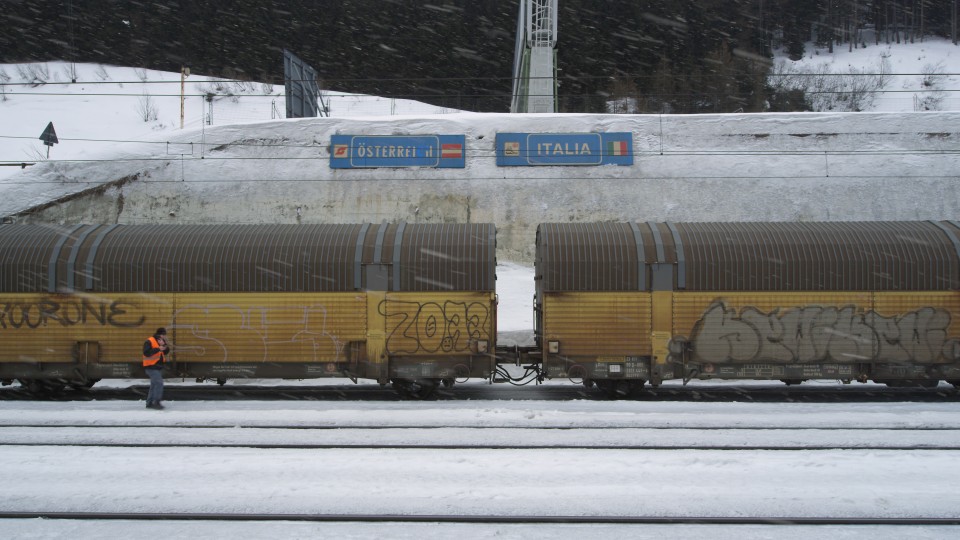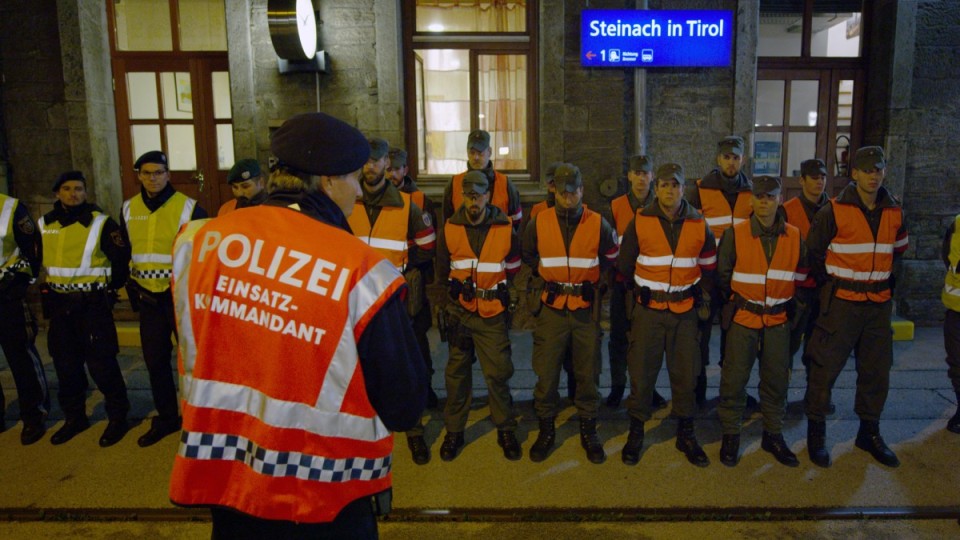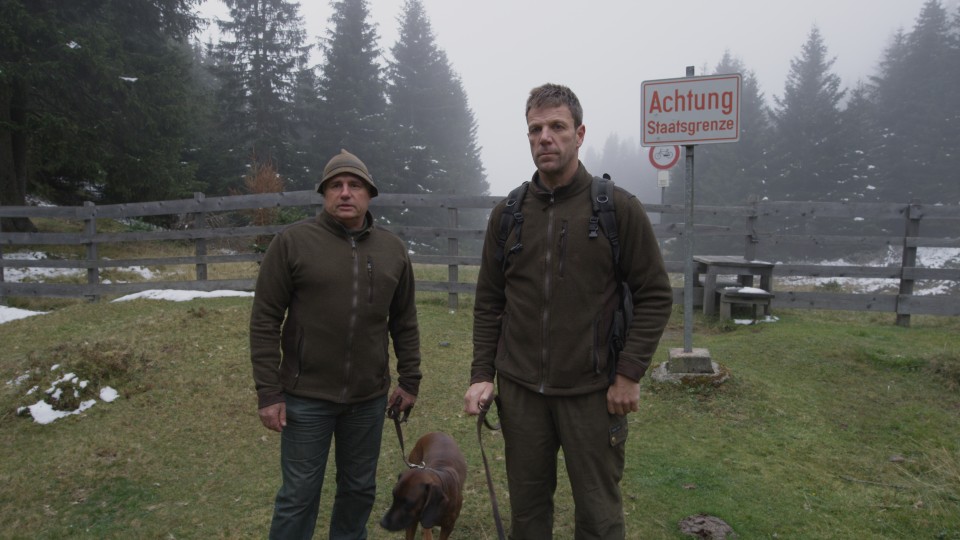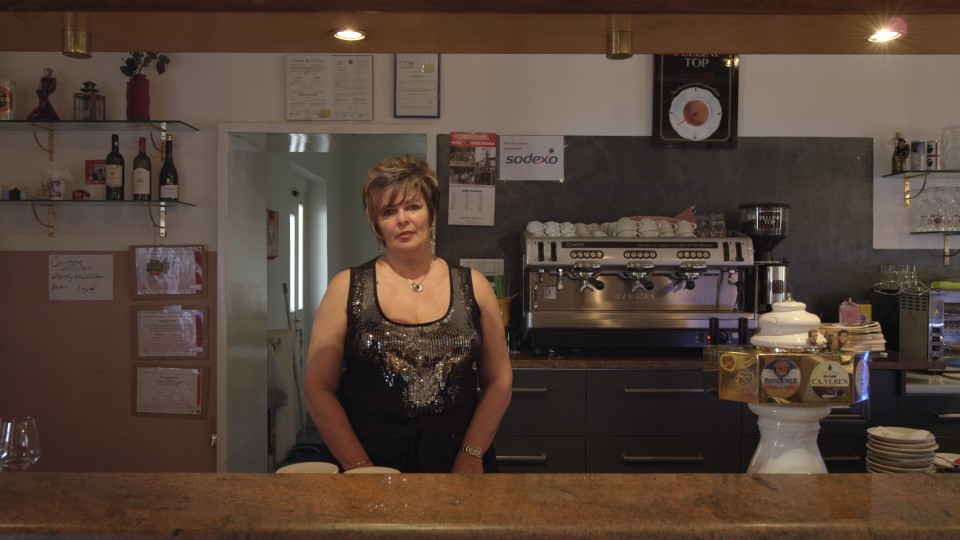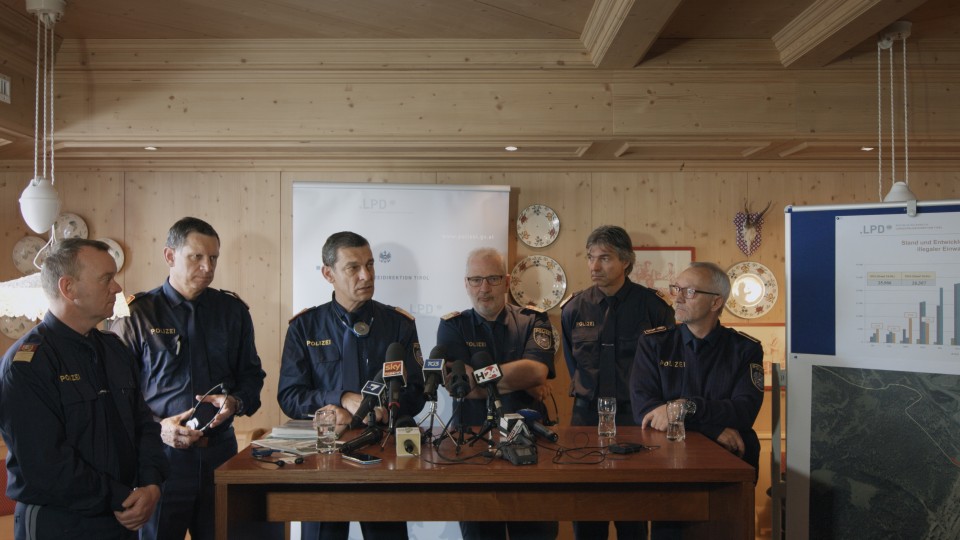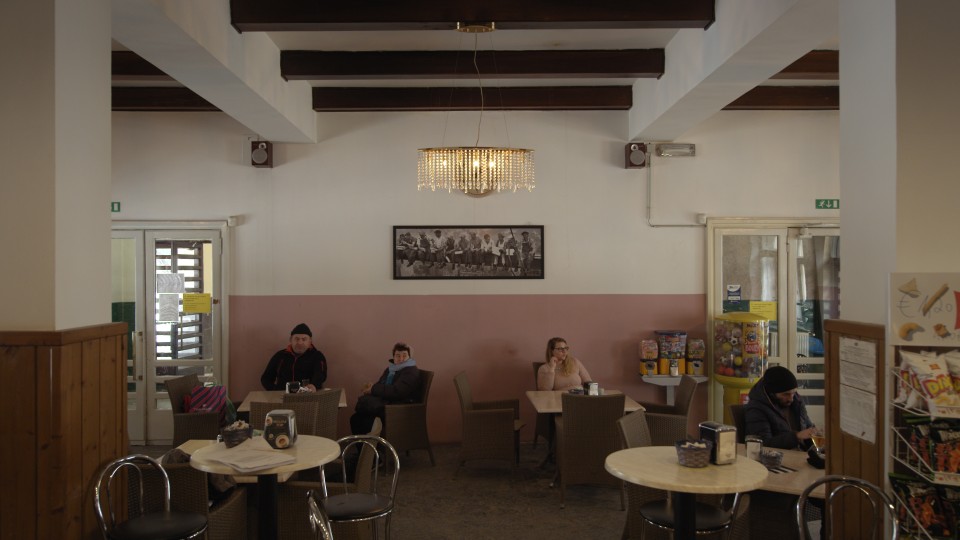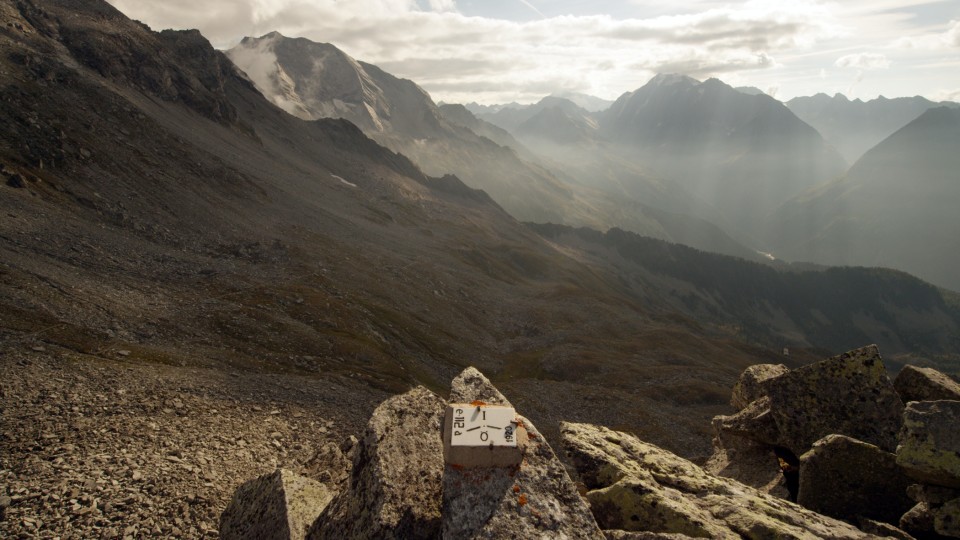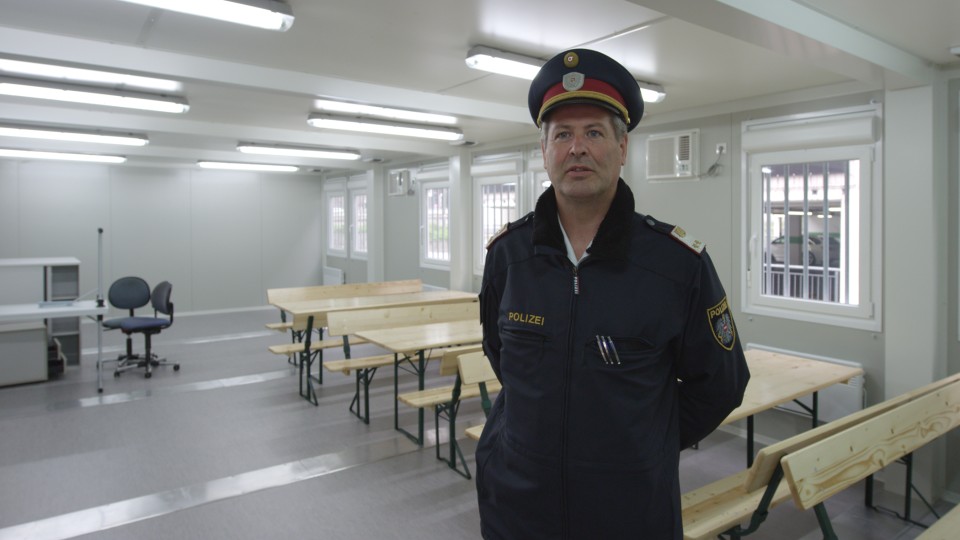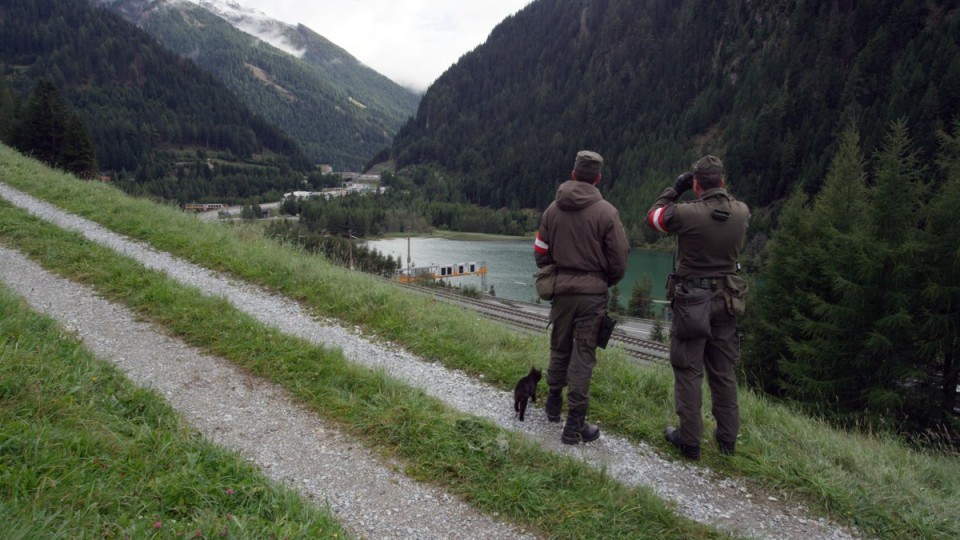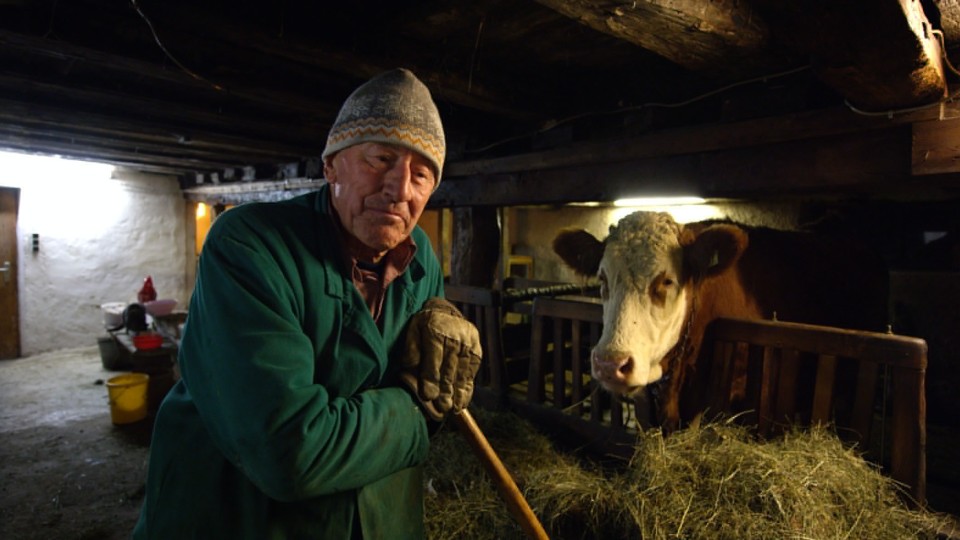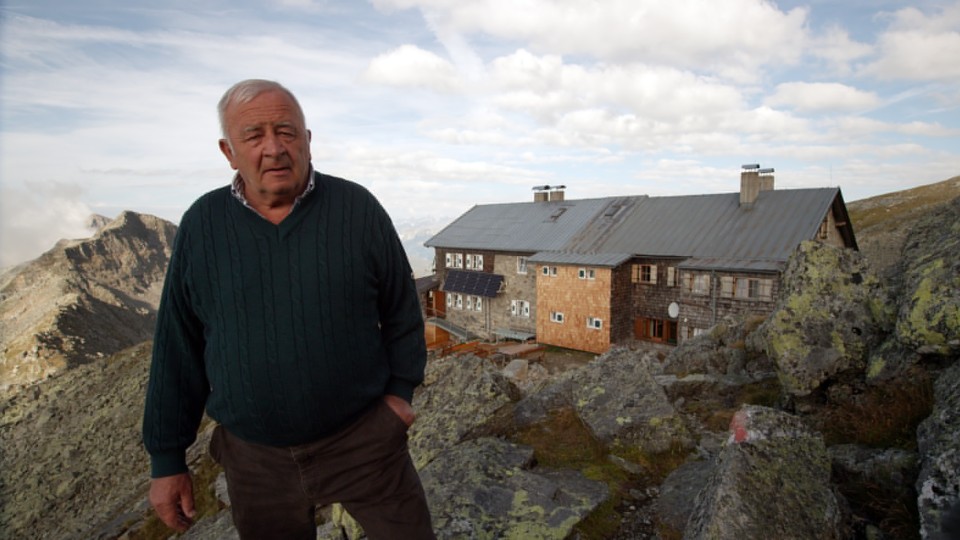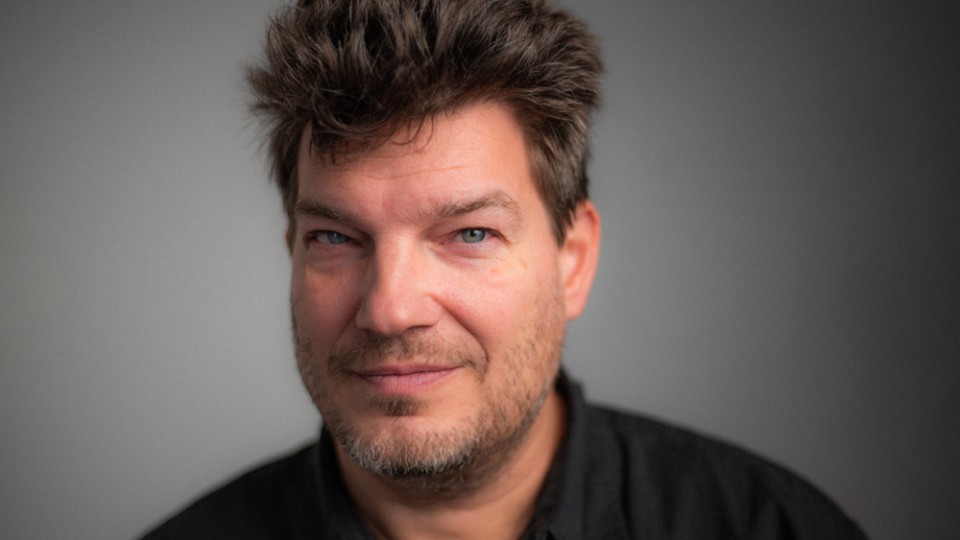The Austrian government's announcement that it would set up a fence at the Brenner border crossing to ensure refugees didn't
stream into the country through Italy prompted Nikolaus Geyrhalter to set off for Tyrol, to capture the creation of this defensive
edifice in The Border Fence. In the end the planned barbed wire barrier was never built, and instead Geyrhalter’s watchful gaze has given rise to
a film about the frontiers inherent in the concept of frontiers, about barriers in the mind, about the indifference of the
landscape and the way a huge fuss can just fizzle out.
Your first shot of the station at Brenner involves a horizontal line – the wagons of a freight train extending on both
sides of the border – which is therefore a connecting line, and a vertical, separating line implied by the two signs
for Austria and Italy. Is The Border Fence primarily an essay about the concept of borders and about life at the border, with borders and without borders?
NIKOLAUS GEYRHALTER: I was prompted to make the film by the plan to erect a fence at the Brenner border, in order to stop hordes of refugees coming
into the country. I found it simply unimaginable that here, in the middle of Europe – where borders had gradually been
pulled down as part of a peace process after a huge struggle – suddenly fences should be put up again. And I thought
it was necessary to intervene by making this film. Originally, thinking that the fence really would be built, I wanted to
observe and record all the stages in the erection of that barrier. In the end the fence that had been announced with great
fanfare was never actually built. In principle that was a good thing, and of course it changed the nature of the film I had
planned. The idea that a border fence could be erected at Brenner triggered a lot of emotions in many people. It was an opportunity
to formulate fears, protests and anger. The fence that was never built became a huge topic on all sides, and it was the occasion
to reflect on an open, closed or half-open border.
Did you feel called upon, in your capacity as a filmmaker, to put forward a reality check in view of the one-sided reports
and headlines about the subject?
NIKOLAUS GEYRHALTER: The political establishment deals with the issue of refugees by means of fear: firstly by stoking this fear and then by taking
advantage of it. By the time the plan to build a fence here was announced the so-called Balkan route had been closed, and
it was quite clear that Syrian refugees – and this was mainly about them – wouldn't risk another sea crossing to
get from Italy to the rest of Europe. Nevertheless, there was lots of shouting about measures to reinforce the border at Brenner.
When you look at the huge expense involved, you can't help wondering whether some of the money couldn't be used more meaningfully
elsewhere in Europe. In a global context, fences don't solve anything. After a certain point the media reporting suddenly
became very one-sided. For a long time this country had a culture of welcoming refugees, with the burden accepted by civil
society. And then abruptly the mood in almost all the media switched, as if it had been decided that the boat was full, and
refugee quotas were established without thinking through the consequences or legality.
I certainly wanted to take a close look at what it means for a place if suddenly registration centres are set up, large numbers
of police are stationed there and fences are erected. I wanted to observe and document the situation analytically, to create
a contemporary political record. I like going to places people don't normally look at very closely.
You repeatedly allowed media reporting on the refugee situation to crop up in scenes in the film, via television or radio.
How did you attempt to juxtapose the two perspectives?
NIKOLAUS GEYRHALTER: It was obvious from the beginning that the image conveyed in the media and the real picture on the ground had very
little in common. That's why I thought it was interesting to let media reports feature in these scenes: to have the minister
speaking on the television in the station bar, to have the news bulletin playing in the living room of our protagonists. Reproducing
this filtered depiction of reality on the spot brought out the absurdity in many ways. After all, the media reports gave the
impression that vast hordes had gathered at the border, posing an immediate threat to Tyrol and the whole of Austria. It was
important for me to show how the headlines, this huge attempt to generate fear, simply didn’t apply to the very place
they were supposed to be describing. And I also wanted to show that there’s a small village where everything continues
almost entirely unchanged, a place which doesn't fit in at all with the hysterical image constructed by the media.
The film focuses primarily on individual people and conversations with them. Were you primarily concerned in finding people
whose lives are dominated by a border, people who have always had to deal with elements of division and connection?
NIKOLAUS GEYRHALTER: I was mainly interested in the question: "How do people live with a border which constantly changes shape?" Over the course
of history this border has had many faces, and it seems to me that these people are fairly unimpressed by it. That's why all
the fuss that was staged about building a fence didn't really bother them much. I find living at the border interesting because
there's always something artificial about a border. If the border weren't there, somehow everything would be different but
still the same. When you travel from the North to the South of Tyrol you don't experience any huge change. Maybe the coffee
tastes better in the South. But basically divisions strike me as constructions which have become anachronisms. I feel European
through and through, and there's something irrelevant about borders. Where you do still find them they‘re going to be
dismantled sooner or later; the world is going to grow together more and more because of modern communication, whether you
feel that's a good thing or not. It's going to happen, and we’ll have to deal with it. And it has become absolutely impossible
to deny the fact that there are places in this world where people's lives are fundamentally worse. We can't act here as though
the other end of the world didn't exist, when we buy their products because they're cheaper and where conflicts develop which
have their historical origins in our own actions. More and more people are going to become aware of this and see Europe and
the world as one entity. I personally don't regard borders as relevant any more. That doesn't mean that the future is going
to be easy and free of conflicts. But we have to face up to the challenges. In view of all that, there's something fascinating
about borders, because they are unnatural and yet at the same time fixed in our heads, and they're capable of changing entire
regions and mentalities.
It's fascinating that you encounter people who have a very humane and discerning view of the refugee situation, people who
respond to the legal measures being taken and the attempt to stoke up fear with something like healthy compassion. Were you
surprised by that yourself?
NIKOLAUS GEYRHALTER: I was extremely relieved. It's deeply moving to meet people who have their own opinion and refuse to be told what to think.
It may sound like one of the clichés about Tyrol, but it really is my impression that generally Tyroleans do what they believe
is right. And it never seemed to me that the local police questioned any of the orders they were given as a matter of principle:
instead, everything was thoroughly discussed and adopted in a proportionate manner. People told me again and again in conversation
that this had a lot to do with being a small, autonomous world enclosed by mountains on all sides. The typical Tyrolean, if
you can make a generalisation like that, has his opinion and stands by it, whether the other person likes it or not. I also
experienced that very often.
Did you make a conscious decision not to have any refugees who had just arrived speak in the film, or did the opportunity
simply not arise?
NIKOLAUS GEYRHALTER: On the one hand, there are very few refugees at Brenner these days. But we also decided at an early stage not to depict
any refugees. This isn't a film about refugees, it's a film about how we Austrians deal with the issue of refugees: "We‘re
afraid. We think we have to protect ourselves. We build fences." It's a way of taking a close look at the people who fence
themselves in, not the people who want to come here.
The conversations are frequently juxtaposed with long shots of (beautiful) countryside which reveals the concept of a border
as a random phenomenon, and with images of various types of transport which dominate the scene at Brenner and symbolise the
connections in operation here. What role does the landscape play?
NIKOLAUS GEYRHALTER: The countryside there is basically as beautiful on this side of the border as on the other side. A landscape remains completely
indifferent to the existence of borders. A tree doesn't care whether it's standing in Italy or not. In that sense, there's
something interchangeable about the landscape – and it's right that way. On the other hand, the landscape provides the
background for the whole story. It's the land which is home to the people we talked to, the same land that the people we didn't
talk to would like to reach, because they hope life there will be safer for them. The border itself, the highway that winds
its way permanently through the landscape, represents fixed points that I wanted to refer to frequently during the film. The
background set, so to speak.
The editing strikes me as very abrupt and rich in contrasts: is this a formal way of conveying the experience of the border
and crossing the border? Did you deliberately choose to use hard cuts in the film?
NIKOLAUS GEYRHALTER: I think we edited the film very gently, but there are moments – especially with extracts from the media or politicians
on television – where it just got to the point that we didn't want to listen any longer. Whatever was being said had
already been said so often, you didn't need the words again. At those points we permitted ourselves to move on abruptly. Even
if it meant interrupting the politicians occasionally. It was better to let the people carry on talking, the people in the
living room watching the television. On top of that, Brenner itself is very varied. I found myself constantly surprised, and
it required appropriate editing. Just a few hundred metres from the highway you find yourself in a little paradise. And if
you walk up the next mountain you can't even hear the highway anymore. We wanted to depict the many aspects of this landscape
that influence the people here, in all its variety. There was the idea of a fence, the residents, the protests, the local
authorities who have to deal with it, the Austrian Army, all interacting and occasionally clashing. It's fascinating how many
contrasts you find, which seem contradictory at first, in such a microcosm.
The Border Fence also demonstrates how reality and discourse can drift apart – something that must concern you in particular as a documentary
filmmaker.
NIKOLAUS GEYRHALTER: That's why we make films – to present a corrective view of the world. None of those films is going to change the
world. But a lot of films together will at least shift a different reality into the centre of the discourse. There are so
many realities, including ones you otherwise don’t look at, either because you don't want to see them or because you
simply have no access to them. That's what movies are for: to make it possible to experience some of these realities in the
cinema.
Interview: Karin Schiefer
June 2018
Translation: Charles Osborne

